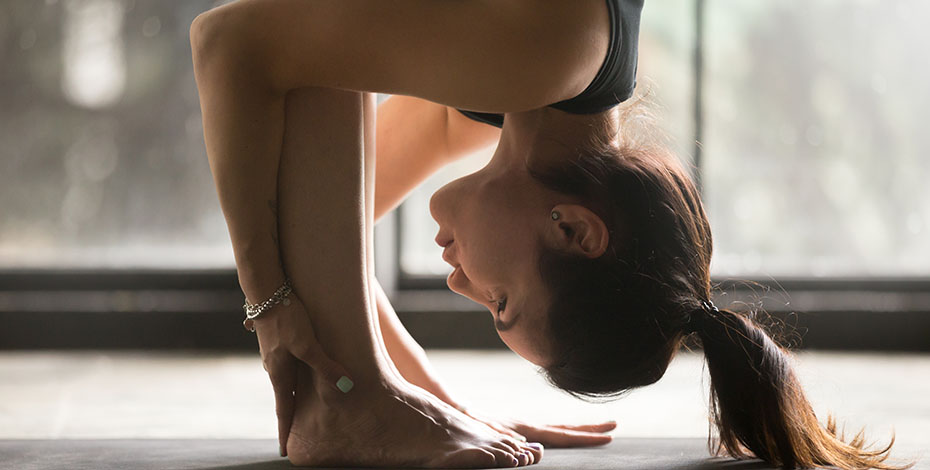
Treatment from head to toe

JOURNAL OF PHYSIOTHERAPY Mark Elkins finds plenty of interesting evidence to consider in the January issue, while several authors answer questions about their research.
Bronchiectasis
The physiotherapy profession has much to offer people with bronchiectasis, making a unique contribution as part of the multidisciplinary team.
Despite this, clinical practice guidelines for physiotherapy management of adults with bronchiectasis have not been updated in five years.
In her Invited Topical Review, Annemarie Lee provides a succinct and skilful summary of the current evidence about physiotherapy management of this condition, including:
• airway clearance techniques
• pulmonary rehabilitation
• respiratory muscle training
• domiciliary humidified oxygen therapy
• mucoactive agents
• non-invasive ventilation
• pre- and post-transplant management
• education and self-management.
Gluteal tendinopathy
A collaboration of Australian and New Zealand physiotherapists have conducted a trial of three management approaches for gluteal tendinopathy—education plus exercise, ultrasound-guided corticosteroid injection and wait and see.
Both corticosteroid injection and exercise plus patient education resulted in greater improvements compared with a wait-and-see approach, but education plus exercise achieved better outcomes at a one-year follow-up.
The researchers report the cost-effectiveness analysis of the trial, which shows that education plus exercise for gluteal tendinopathy is likely to deliver meaningful improvements in patients’ health-related quality of life and provide good value to the health system when compared with either a wait-and-see approach or corticosteroid injection.
Bobath
Bobath therapy, developed in the 1950s, has been a predominant approach to stroke rehabilitation globally for many years.
A group of researchers, including members of the StrokeEd Collaboration and other physiotherapists, have conducted a rigorous review of the literature on the effect of Bobath relative to other interventions for upper-limb rehabilitation after stroke.
Bobath has been compared to:
• task-specific training
• arm movements
• robotics
• mental practice.
The authors conclude that Bobath therapy is less effective than task-specific training and robotics in improving arm activity and less effective than task-specific training on the Fugl-Meyer Assessment score.
Mobile apps
Exercise programs are a high-value, low-cost intervention for improving symptoms and function in musculoskeletal pain conditions, provided that sufficient adherence is achieved.
A group of physiotherapists in Melbourne have summarised the available evidence to answer the question: What is the effect of therapeutic exercise or tailored physical activity programs supported by a mobile app (compared with exercise or physical activity programs delivered using other modes) for people with musculoskeletal pain conditions?
They found that mobile apps supporting therapeutic exercise or tailored physical activity programs for musculoskeletal pain conditions may help in reducing pain intensity and improving physical function.
These effects are particularly evident in trials involving people with knee osteoarthritis.
Flexible flatfoot
Flexible flatfoot is a common condition in which the medial longitudinal arch is present when not weight-bearing but lost when weight-bearing.
Although mild flatfoot may be asymptomatic, as the severity of the condition increases it typically becomes symptomatic and affects gait.
Physiotherapists in India conducted a randomised trial to estimate the effect of a comprehensive exercise program that included:
• warm-up
• active dorsiflexion and plantarflexion
• toe spreading
• hallux extension
• lesser toe extension
• doming
• gluteal muscle strengthening
• cool down.
After six weeks, the experimental group had greater improvements than the control group in the navicular drop height and longitudinal arch angle.
The comprehensive exercise program was safe and incurred little attrition among those using the program.
As well as better alignment of the foot, the cosmetic appearance also improved.
The January issue of the Journal of Physiotherapy also has items related to normal gait speed, mechanical insufflation-exsufflation, promotion of physical activity in people with coronary heart disease, management of dementia, deriving latent trajectories in health research and promoting your research in the mainstream media.
Journal of Physiotherapy’s Paper of the Year
Journal of Physiotherapy’s Paper of the Year for 2022 is a systematic review with a network meta-analysis of conservative interventions for chronic neck pain.
The winning paper expertly summarises the results of an enormous amount of research—119 randomised trials with over 12,000 participants.
The review found evidence that a combination of active and/or passive multimodal non-pharmacological inventions (eg, exercise and manual therapy) was effective for both pain and disability at one month and at three to six months in people with chronic non-specific neck pain.
Compared with inert treatment, anti-inflammatory drugs alone or in combination with another non-pharmacological treatment did not reduce pain at one month, at three to six months or at 12 months.
Most adverse events were mild but were experienced following acupuncture or dry needling intervention.
The members of the Editorial Board congratulate Greta Castellini, Paolo Pillastrini and their co-authors on their success.
Castellini G et al. ‘Some conservative interventions are more effective than others for people with chronic non-specific neck pain: a systematic review and network meta-analysis.’ J Physiother. 68(4), 2022, pages 244–254.
Click here to read the research.
© Copyright 2024 by Australian Physiotherapy Association. All rights reserved.





